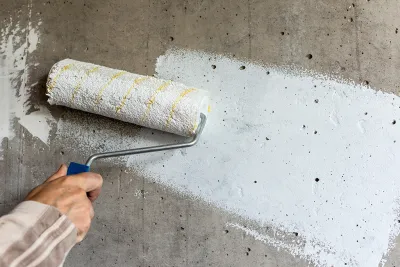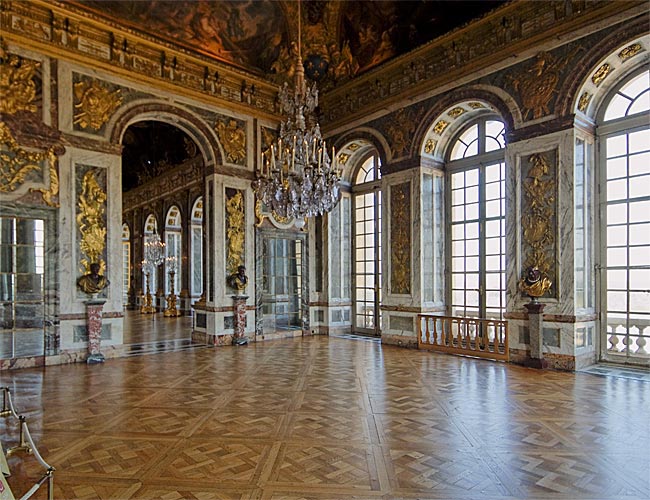A Comprehensive Guide to Choosing the Right Type of Paint for Concrete Walls
When it comes to enhancing the aesthetics of your home or office space, painting the concrete walls can make a significant difference.
Whether you’re renovating, redecorating, or simply looking to refresh the appearance of a room, choosing the right type of paint for concrete walls is crucial.
In this comprehensive guide, we’ll explore various factors to consider, different types of paint, application techniques, and essential tips to ensure a successful and long-lasting paint job.
Let’s begin!
Factors to Consider
When deciding on the type of paint for your concrete walls, there are a few key factors to consider.
Surface Preparation
The key to a successful paint job on concrete walls lies in thorough surface preparation. Begin by cleaning the walls to remove any dirt, dust, or grease.
Use a wire brush to eliminate loose particles and patch any visible cracks or holes. A well-prepared surface ensures better adhesion and longevity of the paint.
Moisture Content
Concrete walls are susceptible to moisture, especially in basements or areas prone to dampness. It’s crucial to assess the moisture content of the walls before selecting a paint. Moisture-resistant paints or waterproofing primers can help prevent issues like mold and mildew.
Indoor vs. Outdoor Application
Consider the location of the concrete walls – whether it’s an interior or exterior space. Indoor paints are designed for lower exposure to elements and may not withstand harsh outdoor conditions. For exterior walls, choose a paint specifically formulated for weather resistance.
Climate and Temperature
The climate of your region plays a significant role in paint selection. Different paints respond differently to temperature variations. Ensure that the paint you choose can withstand the temperature fluctuations typical of your area.
Types of Paint for Concrete Walls
Now that you’ve assessed the factors influencing your choice of paint for concrete walls, let’s explore the various types of paint suitable for concrete walls.
Latex Paint
Latex or acrylic paint is a popular choice for concrete walls due to its versatility and ease of use. It dries quickly, emits fewer fumes, and is easy to clean up with water.
Latex paint is suitable for both interior and exterior walls and provides a durable finish. It also comes in a wide range of colors, allowing for creative expression.
Epoxy Paint
Epoxy paint is an excellent option for high-traffic areas or places exposed to moisture, such as basements and garages. It forms a hard, durable surface that is resistant to stains and chemicals. Epoxy paint is commonly used in industrial settings but can also be a practical choice for residential spaces.
Masonry Paint
Specifically formulated for masonry surfaces, masonry paint provides excellent coverage and durability on concrete walls. It offers resistance to:
- weathering
- UV rays
- moisture
Masonry paint is available in a variety of finishes, including matte and glossy, allowing you to achieve the desired aesthetic for your space.
Concrete Stain
If you prefer to enhance the natural texture of your concrete walls, consider using a concrete stain. Unlike traditional paints, stains penetrate the surface, creating a translucent finish highlighting the concrete’s texture. They come in a range of colors, offering a unique and aesthetically pleasing look.
Waterproofing Paint
Waterproofing paint is necessary for areas prone to water infiltration, such as basements or exterior walls exposed to heavy rain. This type of paint creates a barrier against water, preventing moisture from seeping into the concrete.
Application Techniques
When it comes to painting concrete walls, proper application techniques are crucial for achieving a professional finish. Here are some to keep in mind:
Priming
Applying a primer before painting is crucial for concrete walls. A quality primer:
- enhances adhesion
- covers imperfections
- promotes an even finish
Choose a primer designed for masonry surfaces and allow it to dry thoroughly before applying the paint.
Roller vs. Brush vs. Sprayer
Selecting the right application method depends on your preferences and the size of the painting project. A roller is ideal for large, flat surfaces, providing even coverage.
A brush is useful for detailed work and reaching corners, while a sprayer can expedite the process for extensive areas. Consider using a combination of these tools for optimal results.
Multiple Coats
Achieving a uniform and long-lasting finish often requires applying multiple coats of paint. Allow each coat to dry completely before applying the next. This process ensures better coverage and durability, especially when dealing with darker or vibrant colors.
Sealing the Paint
After completing the paint job, consider applying a clear sealer to protect the surface and enhance the longevity of the paint. Sealers provide an additional layer of defense against moisture, stains, and UV rays, keeping your concrete walls looking fresh for an extended period.
Essential Tips for a Successful Paint Job
Just like any other home improvement project, painting concrete walls requires proper preparation and execution. Here are some essential tips to keep in mind for a successful paint job:
Ventilation
Proper ventilation is crucial, especially when working with paints that emit fumes. Ensure good airflow by opening windows and doors. If you’re painting an enclosed space, use fans to improve ventilation, and wear a mask to protect yourself from inhaling fumes.
Consult Professionals
If you’re uncertain about the right type of paint or application technique, consulting with a professional house painter like, a House Painter in Reading is a valuable step. A seasoned painter can provide insights based on their experience and help you make informed decisions that align with your specific needs.
Test Samples
Before committing to a full paint job, test small samples of your chosen paint on a discreet area of the wall. This allows you to assess the color, finish, and overall compatibility with your concrete walls. It’s a simple yet effective way to avoid any surprises once the entire project is complete.
Follow Manufacturer Guidelines
Each paint product comes with specific guidelines and recommendations from the manufacturer. Read and follow manufacturers’ instructions carefully to ensure optimal results. This includes information on drying times, temperature requirements, and any additional steps necessary for a successful paint job.
Choose the Right Paint for Concrete Walls Today
Choosing the best paint for concrete walls is crucial for a visually appealing and durable finish. Consider factors like surface prep, moisture, and location to make an informed decision. Options include latex paint, epoxy paint, masonry paint, concrete stain, or waterproofing paint. Proper application techniques and testing samples beforehand are key to success. Consulting a house painter guide is also helpful.
If you’re still looking for more articles like this, feel free to visit this site every day.

Greetings! I’m thrilled to introduce myself as a dedicated blogger with a fervent passion for crafting meticulously researched and insightful blogs. My mission is to provide you, the readers, with a treasure trove of valuable information. Join me in this exciting adventure of discovery – Thanks







